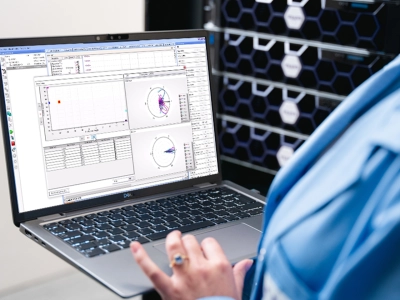5G Solutions
Network Test, Automation and Optimization
Validate performance, security and interoperability at each stage in intelligent, intuitive and automated ways.
As wireless networks migrate to the Cloud, complexity grows, demanding assured high performance and interoperability. A comprehensive approach from lab to field to assurance ensures dependable 5G.
VIAVI solutions for testing, automation, and optimization deliver flawless results throughout all stages of implementation. As the workforce embraces advanced skills to manage sophisticated software and technologies like data intelligence, data science, or machine learning, investing in thorough testing and optimization pays off handsomely.
Turn your Network from good to great:
- Validate components and design in the lab
- Verify live results meet field requirements
- Optimize Quality of Service with expanded network intelligence solutions
- Transition legacy NOC to Dark NOC
- Achieve end-to-end network visibility across Cloud, Mobility, IT/MEC, and IoT platforms
The Customer Experience
For CSPs, NEMs, cloud operators, or contractors, superior validation, verification, & visibility solutions ensure top quality throughout the network, saving money by preventing costly post-deployment emergencies.
- The Quality journey starts in the Lab, where new 5G network elements are developed. With knowledge across multi-vendor, cloud-native and open networks, we rigorously test performance to anticipate real-world implementation challenges.
- VIAVI field verification solutions enhance network capabilities during installation, commissioning, and acceptance, crucial for smooth 5G operations.
- Post-deployment, VIAVI optimizes networks with further intelligence and automation, covering Cloud Native Inventory, Service Assurance, AI and ML-driven Assurance, Customer and Service Analytics, and Network Automation.
Industry Engagement
Three Steps to Full 5G

Lab Validation
Lab Validation includes RANtoCore functional, performance, and conformance testing solutions for interoperable 4G, 5G, and O-RAN wireless communication network elements. You can emulate thousands of users and different services to exercise and validate the RAN and Core.

Installation and Maintenance
Field solutions include antenna alignment, fiber and coax verification, real-time spectrum analysis, X-haul validation, timing & synchronization, EMF analysis and uplink interference detection.

AIOps, Assurance and Analytics
VIAVI NITRO AIOps solutions empower Service Providers to evolve their legacy NOC to Dark NOC and get end-to-end network visibility across Cloud, Mobility, IT/MEC and IoT platforms.
The suite covers Cloud Native Inventory, Service Assurance, AI and ML driven Assurance, Customer and Service Analytics and Network Automation Solutions.
Application Notes
Brochures
Case Studies
White Papers & Books
Video
Webinar Series
Let Us Help
We’re here to help you get ahead.












